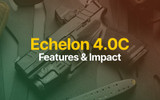A Guide to Hunting, Sporting & AR-15 Rifle Barrels
In this post, we’re discussing rifle barrel types in terms of materials, finishes, profiles, twist rates, and more. So if you’re choosing your first rifle or upgrading your current one, this is a must-read. Let’s get started!
Rifle Barrel Materials Overview
Chrome Moly (Alloy Steels)
Alloy steels are popular for rifle barrels because they are versatile and cost-effective. They can be coated and lined more readily than stainless steel and can be cold hammer forged without cracking. Additionally, they are easier to machine, making production cheaper. This is why chrome colly steel is used for mil-spec manufacturing.
- 4140 Steel: This is a low-carbon (0.4%) steel that uses chrome and molybdenum to enhance its strength. It offers better machinability than 4150 steel but has slightly lower tensile strength.
- 4150 Steel: This is a high-carbon (0.5%) steel that is often used in mil-spec barrels. Note, however, that not all 4150 steel meets mil-spec standards. Overall, 4150 is very similar to 4140. 4150 steel barrels with some vanadium content are marketed as 4150 CMV steel or CrMoV. Vanadium enhances the steel's heat resistance.
Stainless Steel
Stainless steel is chosen for its excellent rifling relief, which is crucial for accuracy-focused shooters. Although it is harder to machine, it provides a homogeneous structure that ensures a straight and consistent bore.
- 416R Stainless Steel: This type is widely used due to its uniformity and minimal issues during production. It shares similar strength characteristics with 4140 and 4150 steels. However, stainless steel generally faces challenges in being nitrided or lined. Its corrosion resistance, while good, is not on par with cutlery stainless steels.
Carbon Fiber Reinforced Polymer (CFRP)
CFRP is an innovative barrel construction technique that combines carbon fiber-reinforced epoxy wraps with a steel bore sleeve. The result is a barrel that balances lightness and stiffness.
- Advantages: CFRP barrels offer good stiffness and low weight, which is beneficial for users who prioritize a manageable firearm without sacrificing too much integrity.
- Disadvantages: They tend to be expensive and retain heat. Additionally, they may not match the extreme lightness or stiffness provided by some all-steel barrels. Different weave patterns are employed to optimize for either stiffness or heat conduction.
Check Proof Research for CFRP barrels and rifles featuring one.
Barrel Finishes
Alloy Steel Finishing
- Phosphating (Parkerizing): A phosphate conversion coating commonly applied to military-spec barrels. It protects against corrosion and retains oil, which further enhances rust prevention. Zinc phosphate (medium grey) and manganese phosphate (black or dark grey) are the common types. It can be rough or smooth and is often paired with chrome lining in the bore.
- Bluing: Converts surface steel into black iron oxide providing good corrosion resistance and a smooth finish. The difference between black oxide and phosphate finishes is minimal. Often found on hunting rifles and classic firearms.
- Nitride (Black Nitride, QPQ): A process that integrates nitrogen into the steel, improving hardness and corrosion resistance. It typically results in a hard, black, corrosion-resistant finish. Ideal for barrels that require high durability and low friction.
Stainless Steel Finishing
- Machine Finish: The most common finish for stainless barrels. It depends on the cutting process on the lathe, varying from very smooth to rough textures.
- Polish: Involves applying abrasives to smooth the barrel, ranging from a satin, foggy finish to a bright, mirror-like polish.
- Bead Blast: Produces a rough matte finish, though not as harsh as chemical treatments.
Paints
- Epoxy-Based Paints: Commonly used coatings like Cerakote and Duracoat offer excellent corrosion resistance and protect the external surface of the barrel. Protection levels range from thin and hard (Cerakote) to thick and tough (Duracoat).
Rifle barrel profiles refer to the shape and contour of the barrel, which can significantly impact the rifle's weight, balance, heat dissipation, and overall performance. Here are some common rifle barrel profiles:
Common Rifle Barrel Profiles
Pencil Barrel
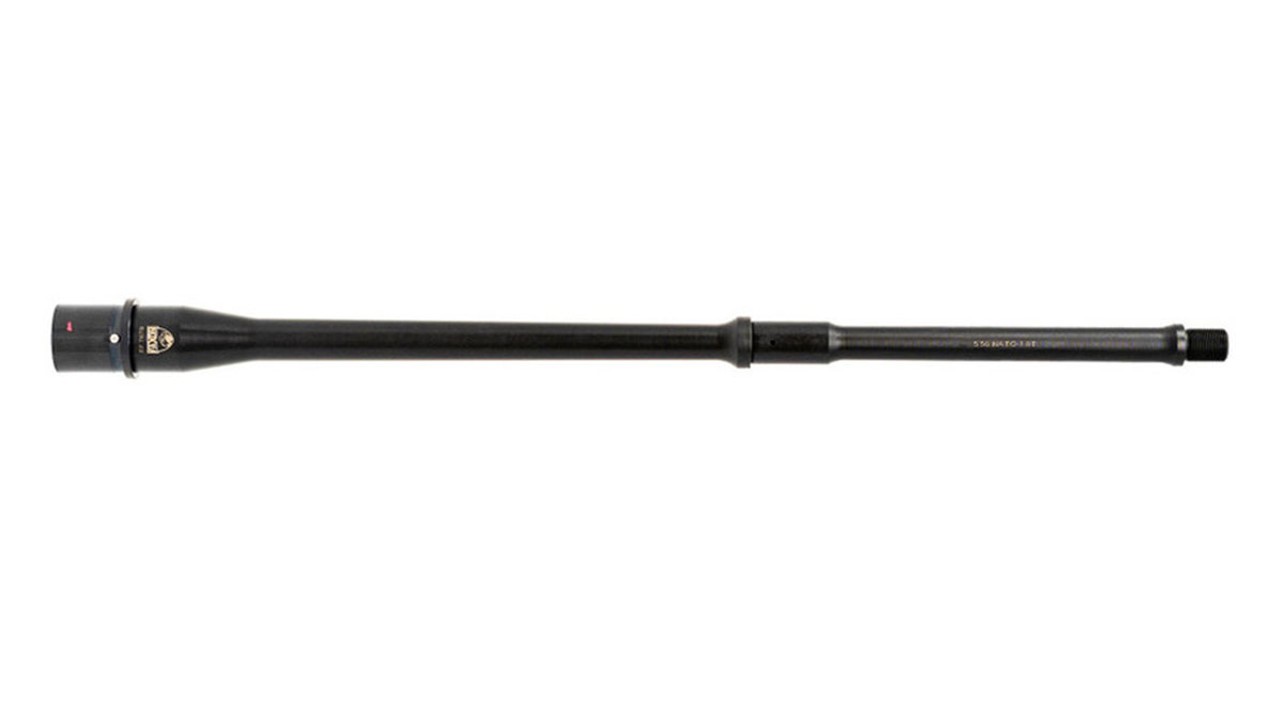
- Characteristics: Thin and lightweight profile.
- Usage: Ideal for situations where weight reduction is crucial, such as in hunting or carrying the rifle over long distances.
- Pros: Easier to handle and maneuver; less fatigue for the shooter.
- Cons: Heats up quickly, which can affect accuracy during prolonged shooting sessions.
Government/Profile A2 Barrel

- Characteristics: Slightly heavier than pencil barrels, with a noticeable step-down near the front sight base.
- Usage: Standard on many military rifles like the M16A2.
- Pros: Balanced compromise between weight and durability.
- Cons: Uneven weight distribution may affect balance for some shooters.
Heavy Barrel (HBAR)
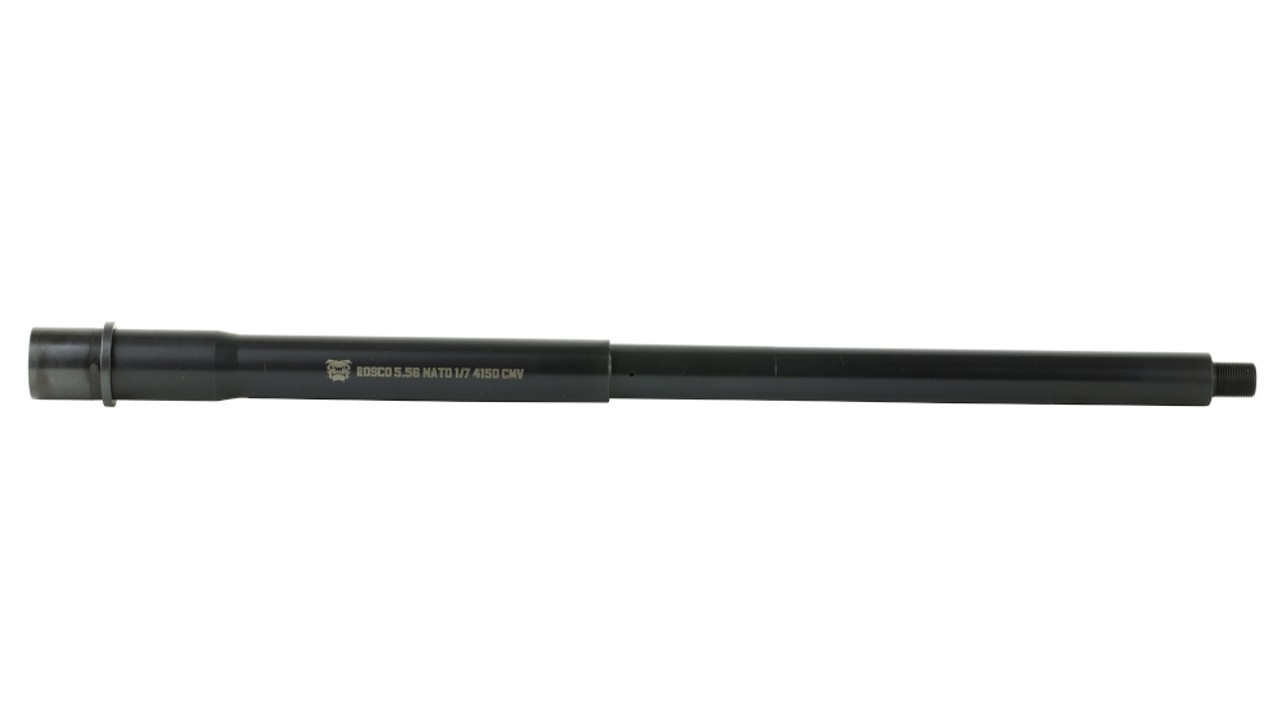
- Characteristics: Thicker and heavier profile throughout the length of the barrel.
- Usage: Common in precision shooting and varmint hunting.
- Pros: Excellent heat resistance; maintains accuracy during extended shooting.
- Cons: Significantly heavier, making the rifle less maneuverable and harder to carry over long distances.
Bull/Varminter Barrel
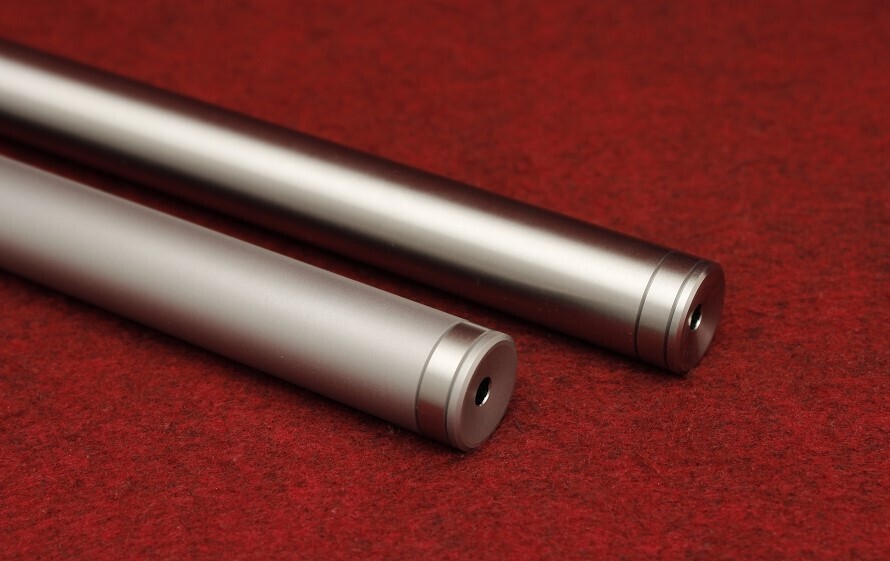
- Characteristics: Extremely thick, with little to no taper.
- Usage: Primarily used in precision rifles and varmint guns.
- Pros: Superior heat resistance and rigidity; exceptional accuracy.
- Cons: Very heavy.
Fluted Barrel

- Characteristics: Features machined grooves (flutes) along its length.
- Usage: Found in various profiles, primarily aimed at reducing weight and improving cooling.
- Pros: Lighter than non-fluted barrels of similar diameter; increased surface area for better cooling.
- Cons: More expensive due to the additional machining process; flutes can be a weak point if not properly designed; flutes often reduce heat performance.
SOCOM Barrel
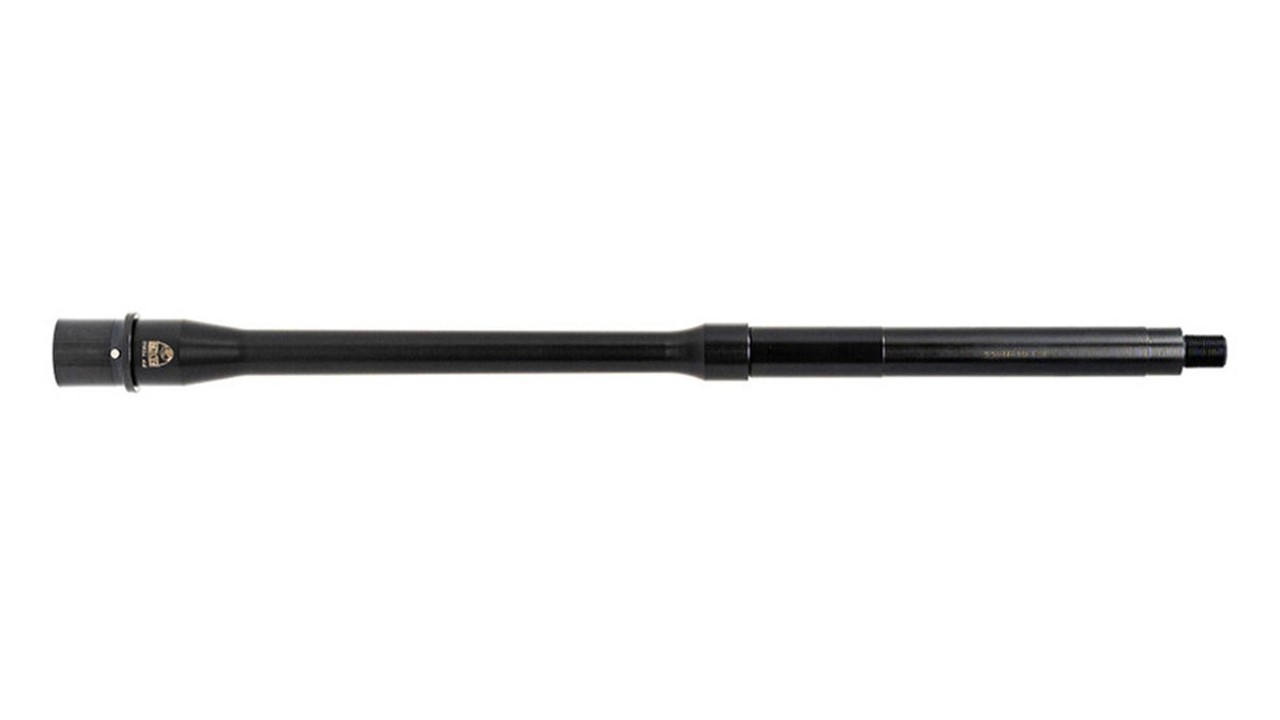
- Characteristics: Heavier profile than the government barrel but lighter than an HBAR, with added material around the chamber area.
- Usage: Designed for military and tactical applications where durability under high rates of fire is necessary.
- Pros: Enhanced durability and heat management; balanced weight distribution.
- Cons: Heavier than standard barrels.
Rifling Methods
There are three main methods for rifling barrels, each with its own pros and cons:
Button Rifling
This method involves pulling or pushing a hard steel or tungsten carbide button through the bore to form the grooves and lands. The button has a mirror relief of the desired rifling and rotates consistently with the twist rate of the barrel. The process indeed is repeatable and allows the production of both cheap and high-end barrels.
Cut Rifling
Cut rifling is used exclusively for high-end barrels. A high-precision CNC or sine-bar machine pulls a cutter through the bore to create sharp, consistent grooves. So, the process produces very sharp and consistent rifling and allows for customization in rifling patterns, like changing twist rates, but this comes at quite a cost.
Cold Hammer Forged (CHF) Rifling
In this method, a bored-out steel blank is hammered over a mandrel with the inverse of the desired rifling pattern cut into it. This shapes the rifling and potentially the overall contour of the barrel. The method allows for quick and cost-efficient production of quality barrels. However, only major manufacturers use CHF due to the high initial investment in CHF machinery and the fact that a rough bore requires further lapping and stress relief.
Bore Treatment
Nitriding
Nitriding is a technique that infuses nitrogen and carbon into the surface layer of the steel. This process significantly increases the surface hardness, achieving a rating of around 65-70 RC while maintaining the softer core steel at about 30-35 RC. This enhanced surface hardness considerably slows down the wear rate of the throat and rifling, effectively extending the barrel's life by approximately four times compared to untreated barrels.
Pros:
- Extends barrel life due to reduced wear
- Increases corrosion resistance, especially in chromoly barrels
- Cost-effective and efficient for mass production
- Does not alter the barrel’s dimensions, maintaining its original form
Cons:
- Potential performance discrepancies in high-end match barrels
- Stainless steel barrels see minimal benefit from nitriding
Chrome Lining
Chrome lining is a process where a thin layer of chrome, about 70 RC, is applied inside the bore of a rifle barrel. This layer serves as a hard, corrosion-resistant barrier that significantly extends the barrel's lifespan by approximately 4-5 times. The chrome acts as a sacrificial layer, meaning it wears down slowly while the underlying steel remains protected. Chrome lining is particularly popular in barrels designed for full-auto use due to its resilience at high temperatures, although its hardness decreases at elevated temperatures similarly to steel.
Pros:
- Extends barrel life significantly
- Provides excellent corrosion resistance
- Suitable for high-temperature applications
- Reduces wear rate of the bore
Cons:
- Can affect the bore and rifling shape, leading to less sharp and consistent rifling (can be mitigated by lapping)
- Inconsistent coating thickness, often thicker at the ends than the middle
- Potential for the chrome layer to flake off, disrupting bore consistency
- Generally less accurate than other bore treatments or untreated steel bores
Twist Rate
The barrel twist rate refers to the rate at which the rifling inside the barrel twists, which stabilizes the bullet in flight. It’s expressed as a ratio, such as 1:7 or 1:12, meaning the bullet makes one full revolution in 7 or 12 inches, respectively.
The twist rate is crucial for bullet stability. A proper twist rate ensures that the bullet spins fast enough to maintain a stable trajectory, improving accuracy and performance.
Common Twist Rates and Their Applications
Generally, a faster twist rate works better with long-range bullets, while a slower twist rate works better with shorter bullets.
Length is crucial, while diameter and weight are actually less important on their own. For bullets with the same shape and density, mass grows with volume, and volume grows with the cube of length or diameter. Thus, bullets with similar shapes and compositions need similar twist rates, despite varying lengths, diameters, and masses.
However, you shouldn’t forget about other factors that impact ballistics, including velocity, temperature, air density, etc.
1:7 Twist Rate - One full turn in 7 inches. Common in military rifles like the M16 and M4. While it works well with long, heavier bullets (70-90 grains, .224 in diameter), this twist was initially introduced in military rifles to aid in bullet stabilization in extreme conditions and might benefit a civilian shooter less than 1:8 in terms of ammo variety.
1:8 Twist Rate - One full turn in 8 inches. It’s ideal for the absolute majority of bullets to shoot from a semi-auto AR-15 rifle, including .223/5.56, 6.5 Creedmoor, .6.5 PRC, 6.5 Grendel.
1:9 Twist Rate - One full turn in 9 inches. Best for 50-70 grain bullets having a diameter of .224. Good for general-purpose use in hunting and target shooting.
1:10 Twist Rate - One full turn in 10 inches. Common in rifles chambered for .308 Winchester and similar cartridges, handling .308 bullets in the 150-230 grain range. However, it can also be used for shooting smaller bullets in .243 - in this case, opt for lightweight bullets in the range of 55-100 grains. Generally, this twist rate is used to stabilize mid-weight bullets used in hunting and long-range shooting.
1:12 Twist Rate - One full turn in 12 inches. Ideal for high-velocity, light bullets, providing excellent accuracy for small game and target shooting. Best for lightweight bullets in smaller calibers like .22-250 Rem (30-60 grains) and lighter .308 bullets.
1:14 Twist Rate - One full turn in 14 inches. Suitable for very light bullets (35-45 grains). Sometimes used in older .22 caliber rifles. Good for extremely high-velocity, light bullets, though less versatile with modern, heavier projectiles.
Gas System Lengths for AR Rifles
The job of the gas system is to capture energy through gas pressure and volume and use that energy to push the bolt carrier group and brass back against the resistance of the recoil system and fire control group. A longer gas tube brings the gas port closer to the muzzle, and if it’s too close, the gas pressure may be lower than needed for proper cycling.
Pistol-Length Gas System
- Length: 4".
- Barrel Lengths: Typically used with barrels shorter than 10.5 inches.
- Usage: Commonly found on AR pistols and short-barreled rifles (SBRs).
- Characteristics: Offers reliable cycling for very short barrels but can be harsher on components due to higher gas pressure.
Carbine-Length Gas System
- Length: 7"
- Barrel Lengths: Typically used with barrels from 10.5 to 16 inches.
- Usage: Standard on military-style carbines like the M4.
- Characteristics: Provides a balance between reliability and component wear for shorter to mid-length barrels.
Mid-Length Gas System
- Length: 9"
- Barrel Lengths: Typically used with barrels from 14.5 to 18 inches.
- Usage: Popular for its smoother operation and reduced recoil compared to carbine-length systems.
- Characteristics: Offers a good compromise between recoil management and reliability, often chosen for tactical and sporting rifles.
Rifle-Length Gas System
- Length: 12"
- Barrel Lengths: Typically used with barrels 18 inches or longer.
- Usage: Standard on full-length rifles like the AR-15.
- Characteristics: Provides the smoothest operation and least recoil, ideal for precision shooting and long-range applications.
Barrel Lengths
Effect on Weight
Barrel length intuitively affects rifle weight but not always as much as one might think. Shortening the barrel primarily removes weight from the thinnest area in front of the gas block, producing smaller reductions in overall weight.
Effect on Inertia
Longer barrels add weight towards the end of the rifle, impacting its moment of inertia. This change alters how the rifle handles - on the good side, you’ll get increased resistance to muzzle rise and recoil, beneficial for sustained fire; on the bad side, it makes the rifle harder to maneuver quickly, affecting target transitions.
External Ballistics and Accuracy
Longer barrels generally do not inherently provide better accuracy. Many factors, including barrel stiffness and gas system design, influence accuracy. However, longer barrels often enhance external ballistics, improving velocity and potentially expanding effective range.
FAQs
Does CHF rifling extend the life of an AR-15 or M4 barrel?
While CHF rifling is often associated with durability, it doesn't necessarily extend barrel life across various firearms. For instance, performance comparisons between stainless steel barrels and chromoly CHF barrels show similar lifespans.
How does chrome lining impact the longevity of barrels?
Chrome lining significantly improves barrel longevity by resisting wear. This lining is universal in CHF AR-15 barrels but is rare in other types, except for certain high-quality, lapped chrome-lined barrels.
What is the ideal twist rate for AR-15 or M4 barrels?
The ideal twist rate for a bullet is the minimum twist required for it to be stable in its environment and with its cartridge. Over-spinning can cause increased dispersion. Common twist rates might vary depending on bullet size and intended performance.
What does a twist rate of 1:7 mean for my AR-15 barrel?
A twist rate of 1:7 means the bullet completes one full rotation every 7 inches of barrel travel. This rate is ideal for stabilizing longer, heavier bullets, which is often preferred in tactical and long-range shooting scenarios.
How does barrel length affect performance?
Barrel length can significantly impact a rifle's performance. Generally, longer barrels allow for higher muzzle velocities due to increased time for the bullet to accelerate in the bore. This can enhance long-range accuracy and energy. However, shorter barrels are more maneuverable and can be advantageous in close-quarters situations, though they may compromise velocity and accuracy to some extent.
What type of maintenance does a rifle barrel require?
Rifle barrel maintenance includes regular cleaning to remove fouling and residue, inspecting for wear and damage, and ensuring proper lubrication to prevent rust. Using appropriate cleaning solvents, brushes, and patches is essential to maintain the barrel's condition. Frequent shooting may require more comprehensive maintenance routines to ensure optimal performance and longevity.
How does barrel profile influence a rifle's handling and performance?
The barrel profile refers to its contour or shape, which can impact the rifle's weight, balance, and heat dissipation. Heavier profiles, such as bull barrels, are typically more rigid and can handle prolonged firing without significant heat-induced accuracy loss. Lighter profiles, like pencil barrels, reduce the rifle's overall weight, making it easier to carry and maneuver but may heat up faster under heavy use.
Recent Posts
-
Echelon 4.0C Launch and Its Impact on Handgun Design
Recently, Springfield released the new Echelon 4.0C (aka Echelon Compact) 9mm pistol. Read to lear …Dec 18th 2024 -
The End of an Era: Why Cheaper Than Dirt Stopped Selling Guns
Recently, Cheaper Than Dirt, a major online gun store based in Fort Worth, made headlines by steppin …Oct 24th 2024 -
A Guide to Hunting, Sporting & AR-15 Rifle Barrels
In this post, we’re discussing rifle barrel types in terms of materials, finishes, profiles, twis …Jun 11th 2024


